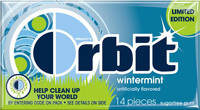
One of the goals of package design should be to lower the “frustration tax” that consumers pay when they interact with a package, the design manager for Wm. Wrigley Jr. Co. told attendees at a packaging industry conference.
Speaking at the recent PMMI Leadership Conference in Rosemont, Ill., Rocco Pawlowski, Wrigley’s regional design manager – North America, talked about how packaging has to break through “the cacophony of clutter” on store shelves. This is especially important now that other forms of advertising have become so fragmented.
“Each of us has a finite amount of time and attention that we’re willing to spend in making a purchase decision,” Pawlowski said. “We’re all cognitive misers.” In Wrigley’s case, that situation is intensified because Wrigley items are often displayed at the supermarket cashiers’ bays, when shoppers are tired, frustrated and/or broke, he said.
“If your brand takes too much time to find or figure out, then you are imposing a frustration tax on consumers,” Pawlowski said. To avoid this “frustration tax,” package designers must offer consumers “shortcuts” that show what a brand is all about. One important way to do this is to integrate all phases of branding, including advertising, promotion, other digital and print communications, package design and structure, in-store displays and other aspects.
Pawlowski spoke about using package design to distinguish Wrigley’s Orbit gum from the competition. When Orbit first hit the market, its paperboard “envelope” was unique for chewing gum, but soon enough competitors rolled out similar packaging.
The design team hit on the idea of printing the paperboard and the wrapper separately, using clear windows on the wrapping to show off the paperboard’s graphics. The wrapper has all the product information; once it’s removed, the consumer is left with an envelope with a fancy design but no verbiage. The envelope then becomes almost a fashion accessory. To increase the appeal, the rotogravure cylinders used to print the envelopes and wrappers have multiple designs engraved on each cylinder, ensuring up to 13 separate designs for each flavor.
Editor’s Note: This feature was excerpted from a story that originally ran in our sister publication Food & Beverage Packaging.
